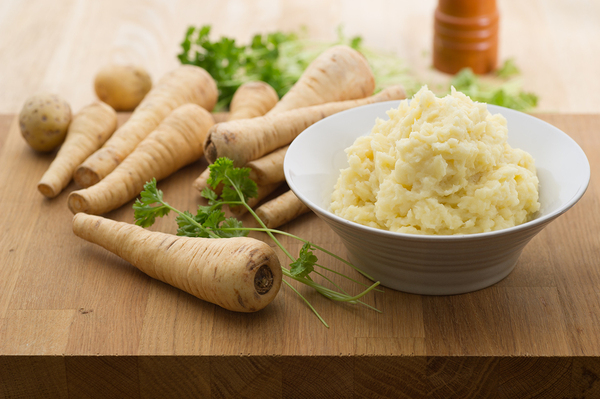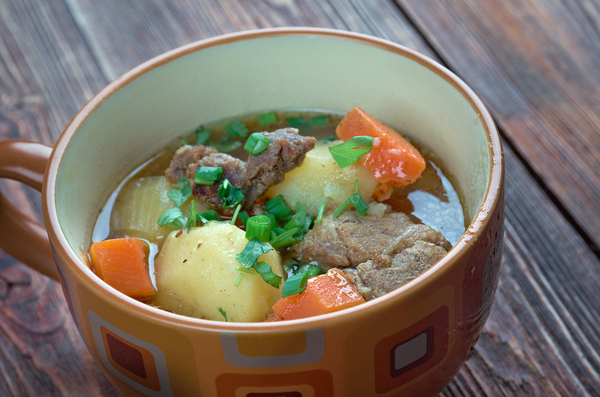


Incorporating seasonal produce into your diet helps ensure that you will eat a variety of foods throughout the year. With a drop in temperature, we tend to desire heartier, starchier, comfort foods. But there's no need to let those culinary urges throw you off of your health and fitness game. As we say goodbye to lighter, summertime fare, we can now look forward to these nutrient-rich, low carb autumn vegetables. If you like carrots, you owe it to yourself to try parsnips too! Some autumn-friendly veggies are “in-season” year-round, like turnips and beets, while others, like rutabaga, are primarily cool weather produce. Spaghetti squash, an early fall vegetable, keeps for a long time in cool storage, and is a terrific addition to autumn menus. Try these five nutritious carbohydrates for healthy energy, fiber, vitamins, and minerals as the weather turns cooler. 1. Turnips The humble turnip has been part of the human diet for over two millennia and is grown in temperate regions around the world. They happen to be rich in calcium, potassium, magnesium, and phosphorous, as well as vitamin C and niacin. High in fiber and low in calories, turnips soak up other flavors, making them ideal for stews. Turnips are remarkably versatile and can be baked, boiled, steamed, or sautéed. Young turnips are slightly sweet and terrific for salads, but this fall consider roasting turnips instead of potatoes. Try this easy recipe for Martha Stewart for roasted turnip fries. You can also use turnip greens in soups and stews as well. 2. Parsnips Similar to carrots, parsnips are used as main vegetable dishes in many parts of Europe. They can be eaten raw or cooked and can be substituted for carrots in recipes. Parsnips are high in fiber and contain some protein, plus they’re high in iron, zinc, magnesium, manganese, and potassium. Parsnips’ vitamin profile is impressive too, providing vitamins B, C, E, and K. Try making parsnip fries or puree them for a comforting side dish in place of mashed potatoes. Mashed parsnips are a breeze to make. All you need is a pot to steam them in, a food processor to mash them up, some olive oil, a few herbs, salt and pepper. 3. Rutabaga Rutabagas are almost like “super turnips,” in that they taste similar and can be prepared in many of the same ways, yet they’re larger and higher in some nutrients. But while turnips have white flesh, rutabagas usually have yellow flesh, and skin tinged with purple. With only around 70 calories apiece, a rutabaga also contains around 80% of the daily recommended value of vitamin C, along with 4.4 grams of fiber, and generous amounts of potassium, calcium, magnesium, and niacin.  Rutabagas add nutrition and taste to hearty cold weather soups and stews. 4. Beets Beets are in peak season from summer through October. If you’re new to buying beets, look for firm, rather than rubbery beets, with crisp greens on top. When you boil beets, leave several inches of stem on top to retain the deep red color. In addition to boiling them, you can bake, roast and pickle beets. They’re good sources of vitamin C, magnesium, folate, and fiber, as well as an amino acid called betaine, which is believed to protect against stomach and colon cancer. Roasting beets is a simple preparation method. Peel and cut into chunks, then toss with a mixture of olive oil, thyme salt, and pepper before roasting for 35 to 40 minutes in a 400-degree oven (turning once or twice during roasting). 5. Spaghetti Squash Spaghetti squash gets its name because when it’s cooked, the flesh separates itself into strands – like spaghetti. It makes a great substitute for pasta for those who want to reduce their carbohydrate intake, and it’s quite nutritious too. You’ll get fiber, vitamins A, C and calcium, plus a range of B vitamins like niacin, thiamin, and riboflavin. The easiest way to prepare spaghetti squash is to bake or broil squash halves until the insides are tender. Then scrape the flesh out with a fork, which produces the spaghetti-like strands. Not only can you use it as a spaghetti substitute, you can use it in frittatas, in soups or make fritters or pancakes . Nutritious carbohydrates exist, and autumn is the best time of year for many of them. Incorporate these healthy carbs into your cold weather eating plan, and you can keep your carb counts under control, and provide yourself with nutrition and energy that won’t make you want to hibernate. If you have questions or want to learn more about nutritious carbohydrates, feel free to contact us at any time.
Rutabagas add nutrition and taste to hearty cold weather soups and stews. 4. Beets Beets are in peak season from summer through October. If you’re new to buying beets, look for firm, rather than rubbery beets, with crisp greens on top. When you boil beets, leave several inches of stem on top to retain the deep red color. In addition to boiling them, you can bake, roast and pickle beets. They’re good sources of vitamin C, magnesium, folate, and fiber, as well as an amino acid called betaine, which is believed to protect against stomach and colon cancer. Roasting beets is a simple preparation method. Peel and cut into chunks, then toss with a mixture of olive oil, thyme salt, and pepper before roasting for 35 to 40 minutes in a 400-degree oven (turning once or twice during roasting). 5. Spaghetti Squash Spaghetti squash gets its name because when it’s cooked, the flesh separates itself into strands – like spaghetti. It makes a great substitute for pasta for those who want to reduce their carbohydrate intake, and it’s quite nutritious too. You’ll get fiber, vitamins A, C and calcium, plus a range of B vitamins like niacin, thiamin, and riboflavin. The easiest way to prepare spaghetti squash is to bake or broil squash halves until the insides are tender. Then scrape the flesh out with a fork, which produces the spaghetti-like strands. Not only can you use it as a spaghetti substitute, you can use it in frittatas, in soups or make fritters or pancakes . Nutritious carbohydrates exist, and autumn is the best time of year for many of them. Incorporate these healthy carbs into your cold weather eating plan, and you can keep your carb counts under control, and provide yourself with nutrition and energy that won’t make you want to hibernate. If you have questions or want to learn more about nutritious carbohydrates, feel free to contact us at any time.